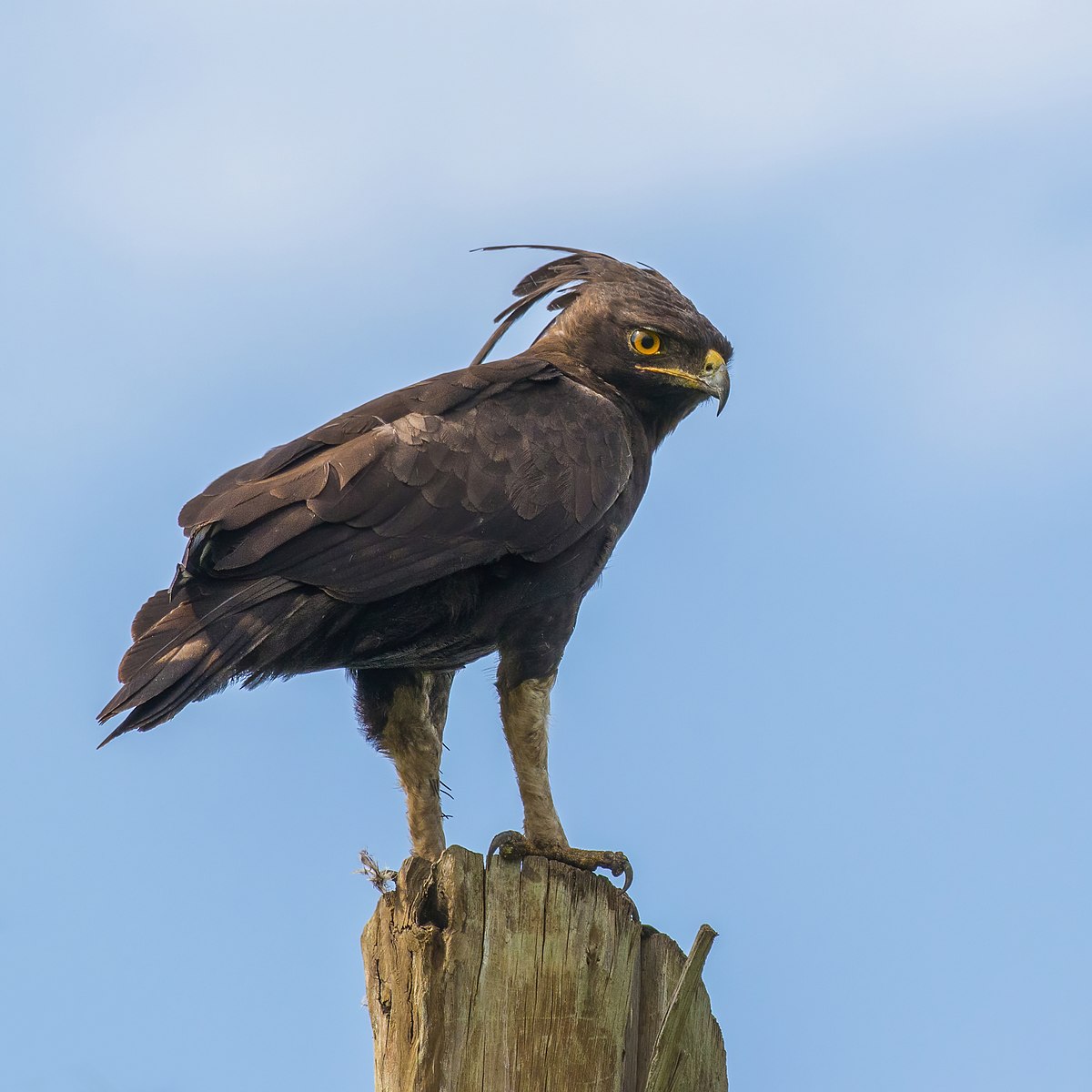The Crested Eagle, also known as Nisaetus cirrhatus, is a large but slender eagle that falls near the middle of sizes among the currently accepted species in the genus Nisaetus. The average overall size difference between females and males is 7%, but this can range individually to an 18-22% difference, with island races apparently thought to be less dimorphic on average.
Crested Eagle Weight: Precise Measurements
The only precise body masses known for the species are derived from the Philippine population, where males average 1.36 kg (3.0 lb) while females average 1.6 kg (3.5 lb). However, they could weigh in excess of 1.81 kg (4.0 lb).
Crested Eagle Size: Wingspan and Total Length
 Image source: Long-crested eagle By Charles J. Sharp
Image source: Long-crested eagle By Charles J. Sharp
The total length of Crested Eagles has been reported in the past to vary from 51 to 82 cm (20 to 32 in), and wingspan from 100 to 160 cm (39 to 63 in). However, these figures appear to include the much more massive hawk-eagles from Flores that are currently considered their own separate species by modern authorities.
Crested Eagle Hunting Prowess
The Crested Eagle is a powerful bird, and it is known to take prey that is almost twice the bird’s weight. This impressive hunting ability is a testament to the eagle’s strength and agility.
Crested Eagle Dimorphism: Size Differences Between Sexes
The average overall size difference between female and male Crested Eagles is 7%, but this can range individually to an 18-22% difference. Island races of the Crested Eagle are thought to be less dimorphic on average.
Crested Eagle Habitat and Distribution
The Crested Eagle is found in various parts of Southeast Asia, including the Philippines, Indonesia, and Malaysia. They inhabit a range of habitats, from tropical forests to coastal areas.
Crested Eagle Conservation Status
The Crested Eagle is currently listed as a species of Least Concern by the International Union for Conservation of Nature (IUCN). However, their populations are threatened by habitat loss and hunting, and their conservation status may change in the future.
Crested Eagle Behavior and Ecology
Crested Eagles are known to be solitary and territorial birds, defending their hunting grounds from other predators. They primarily feed on small to medium-sized mammals, birds, and reptiles.
Crested Eagle Nesting and Breeding
Crested Eagles build large stick nests high up in trees, and they typically lay one or two eggs per breeding season. The incubation period is around 42-45 days, and the young eagles remain with their parents for several months after hatching.
Crested Eagle Adaptations
The Crested Eagle’s slender build and powerful talons are adaptations that allow it to be an effective predator. Its large wingspan also helps it soar and maneuver efficiently while hunting.
Crested Eagle in Culture and Mythology
In some Southeast Asian cultures, the Crested Eagle is revered as a symbol of strength, power, and good luck. It has also been featured in various myths and legends throughout the region.
In conclusion, the Crested Eagle is a fascinating and impressive raptor, with a range of unique characteristics and adaptations that make it a formidable hunter. Understanding the Crested Eagle’s weight and size is crucial for appreciating the species’ impressive capabilities and the role it plays in its ecosystem.
References:
– https://www.krugerpark.co.za/africa_martial_eagle.html
– https://peregrinefund.org/explore-raptors-species/eagles/ornate-hawk-eagle
– https://en.wikipedia.org/wiki/Changeable_hawk-eagle

